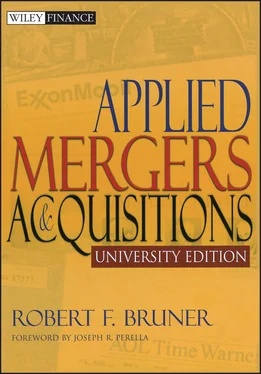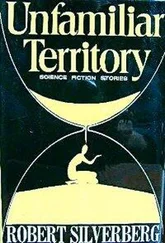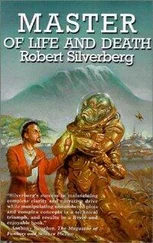Schumpeter’s foundation for our understanding of M&A activity might be distilled into the following points:
Entrepreneurs who seek to create something new and profit by it drive waves of activity. If this is relevant to M&A, then we should observe at the center of individual transactions leaders who, as Schumpeter says, “get things done” against various forms of resistance in the environment. Schumpeter tells us that to understand waves of M&A activity, we should find the leader/entrepreneurs at the center of this activity.
Profit-creating opportunities arise from new products and processes, new logistics, new markets (domestic and foreign), new forms of organization, and so on. If this is relevant to M&A, then we should observe at the center of individual transactions, and clusters of transactions within an industry, some kind of economic turbulence. Schumpeter implies that in order to understand waves of M&A activity, we should listen for the turbulence at the level of firms and markets, not at the level of the economy. The turbulence that is relevant is almost always industry-specific. This explains why deals cluster within industries, and why the attempt to explain M&A waves in the aggregate is fruitless: Each industry or market has its own rich story.
M&A is a process of creative destruction. The destructive aspects of M&A are well documented in the press: plant closings, uprooting of managers and their families, layoffs, transaction-related lawsuits, and so on. Schumpeter hastens to remind us that it is through these processes that the economy renews itself and makes itself more agile and resilient to macroeconomic shocks. To prevent the destruction is to prevent the renewal.
A case in point is presented in Naomi Lamoreaux’ study of the M&A wave of 1894–1904. During that period, more than 1,800 firms disappeared into the formation of 93 consolidated firms with an important, if not dominant, share of market in their respective industries. Though most of these new firms quickly lost their position (because of Schumpeter’s turbulence), a few still ranked among the important firms in the year 2000: U.S. Steel, General Electric, AT&T, DuPont, Eastman Kodak, and International Harvester. This merger wave created considerable alarm among editors, scholars, and public officials who weighed the possible benefits of increased efficiency against the evils of monopoly and predatory behavior.
Lamoreaux offers a different story. She found that the bulk of the M&A activity occurred within selected industries—those characterized by capital intensive and mass-production manufacturing processes in which new firms had recently entered with new and more devastating technology. With high fixed costs, these industries faced high operating leverage, and the resulting impulse to cut prices in an effort to maintain market share and, more importantly, volume. This triggered severe price competition during the depression of the mid-1890s.
M&A entrepreneurs entered this turbulent environment to remove older and less efficient excess capacity from the industry through a new form of organization, the trust. J. P. Morgan is a preeminent example of this entrepreneur. He personally led the reorganization of numerous industries, including steel and railroads. Though the newly structured firms successfully removed excess capacity, in the longer run, they proved to be no more efficient than their nontrust rivals, and therefore proved unable to maintain their dominance unless they erected entry barriers. Lamoreaux notes that federal antitrust policy should have been focused on minimizing the erection of barriers, in lieu of offering the “hodge-podge of policies that, as the example of the steel industry indicates, sometimes hindered the combines’ efforts, sometimes helped them.” 14 She concludes:
The consolidation movement was the product of a particular conjunction of historical events: the development of capital-intensive, mass-production manufacturing techniques in the late nineteenth century; the extraordinary rapid growth that many capital-intensive industries experienced after 1887; the deep depression that began in 1893…. This conjunction of events gave rise to serious price warfare during the depression of the nineties—price warfare that conventional types of collusion proved incapable of ending. After failing in repeated attempts to halt the decline in prices by means of gentlemen’s agreements, selling agencies, and pools, manufacturers in these and many other industries finally organized consolidations.15
Jensen (1993) applies a similar explanation for the wave of industrial restructuring of the 1980s and early 1990s. He argued that this wave had its roots in the turbulence of the 1970s, with the tenfold increase in energy prices, the emergence of the modern market for corporate control, and an explosion of innovation in the capital markets (specifically the emergence of a high-yield debt market). Most important, however, was the economic recovery that began in 1981 and triggered dramatic technological change, which included innovations that would improve the output of existing assets (e.g., from the rise of the personal computer), and changes that would create obsolescence of older products and processes (e.g., from the rise of Wal-Mart and wholesale clubs that introduced a new retailing model). He also cited the importance of deregulation, globalization of trade, organizational innovation (e.g., through the rise of “virtual firms”) and dramatic political changes (e.g., the decline of the Soviet sphere) as forces of change. The aggregate impact of these changes was a rise in excess capacity in industries. Unfortunately, many firms were slow to adjust: General Motors remained the high-cost producer in the industry and removed its CEO in 1992; IBM was the high-cost producer in mainframe computers until it removed its CEO in 1991. Eastman Kodak changed slowly. General Electric successfully mounted a multiyear internal transformation effort that eliminated a quarter of its total workforce. Jensen called for innovation in organizational design, and applauded the rise of the LBO association as one example through which firms could transform themselves.
Bruce Wasserstein, a prominent M&A adviser, offers another Schumpeterian explanation for M&A activity:
The merger business reflects the hubbub of our society with all its bustling and pretense. It is at the edge of change and fashion, and yet a minefield for the unwary. Mistakes are common. Still, good, bad, or indifferent, mergers and acquisitions are an essential vehicle for corporate change, and the pace of change is increasing. The patterns of industrial development through mergers, like those of economic activity, are crude and imperfect. However, there do seem to be elemental forces, Five Pistons, which drive the merger process. They are regulatory and political reform, technological change, fluctuations in financial markets, the role of leadership, and the tension between scale and focus.16
Wasserstein surveys several industries (energy, conglomerates, financial services, telecommunications, entertainment, and health care) to show that the boom in M&A activity in each of these industries during the 1990s could be traced to the turbulence induced by one or more of the five pistons. Each industry has its own story; one size does not fit all. He concludes:
The specifics driving each deal are different, but there is a common pattern to the process. Existing business strategies and structures ossify over time. These structures may survive for some period with the protection of systemic inertia. Eventually, however, external catalysts give a sharp jolt to the system. Outmoded practices become apparent. Mergers and acquisitions, a kind of rough-hewn evolutionary mechanism, then occur as companies react to the new business realities.17
Читать дальше












